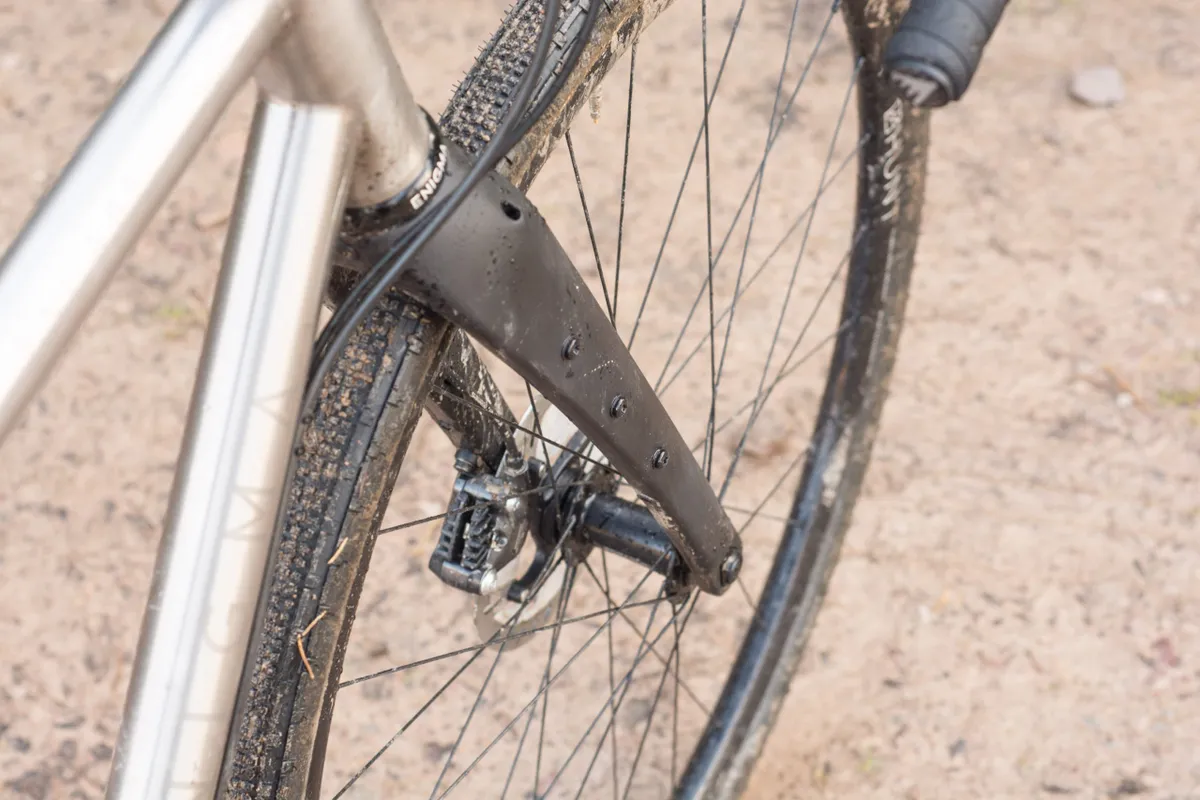Many cyclists won’t need much persuading that their next bike should be titanium. Bikes made of the metal are highly desirable for their raw metal looks and fabled ride quality. But, although these two factors are significant, there’s more to titanium.
While aluminium and steel bikes span a large price range, many target the lower end of the bike market, even if there are more expensive examples, such as the steel €12,500 Cinelli Speciale Corsa XCR.
In contrast, titanium bikes start at a higher price, and the upper reaches of the titanium bike price range can be as expensive as a premium carbon fibre bike.
But there are many reasons to choose a titanium bike, if one is within your planned budget, not least their longevity.
David Clow, co-founder of titanium bike specialist J.Laverack, begins with a titanium bike’s longevity: “Especially in the consumer-disposable world we live in, it can be your one bike for life,” he says.
Ride quality

“Titanium bikes are very comfortable and smooth,” Clow says. “Although you can make any frame material ultra-compliant or ultra-stiff, titanium’s natural properties dampen vibration and take the sting out of rough surfaces.”
Because of the comfort on offer, the design of titanium road bikes is often aimed at covering long distances. It’s also a popular material for gravel bikes, thanks to its ability to soak up bumpy surfaces.
Framebuilders can fine-tune the ride characteristics of their titanium frames by using different grades of titanium alloy, as well as the frame shapes and geometry.
Enigma Bikes, based in Sussex, says that many bike frames are made of 3AL 2.5V titanium alloy, which contains 3 per cent aluminium and 2.5 per cent vanadium, and is up to 50 per cent stronger than pure titanium. 6AL 4V tubing is stronger still and may be used for parts of the frame where stiffness is important.
Customisation

Clow highlights the opportunity to get exactly the bike you want if you're buying a high-end titanium bike, such as those made by J.Laverack.
“With titanium, there’s no reason to settle. You can have a custom fit and spec the frame as you want,” he says. “You can get involved in the process and choose details such as the frame angles and components fitted.”
Although you can buy a custom steel frame, titanium particularly lends itself to bespoke framebuilding and its longevity helps to justify the extra cost of a custom frame.
Durability

Titanium bikes have a deserved reputation for durability. They’re often marketed as a bike for life and you can expect thousands of kilometres of riding from a titanium frameset, helping to offset the higher initial price than steel or aluminium.
A titanium frame is likely to outlast a comparably priced one made of carbon fibre, too.
Weight

Titanium is a lighter metal than either aluminium or steel, which results in a bike that’s typically lighter too.
In fact, titanium bikes can rival carbon for weight. Litespeed says its Coll dels Reis titanium frameset is the world’s lightest titanium frame. It weighs a claimed 948g, similar to many high-end carbon frames, and you can build the frame into a lightweight bike that weighs around 7kg, if you have deep pockets.
Corrosion resistance

Titanium doesn’t corrode, unlike steel or aluminium. While untreated non-stainless steel rusts readily, aluminium can corrode in certain conditions and is susceptible to galvanic corrosion where it’s in contact with other metals and a salt solution such as from a damp road or sweat. Even carbon fibre can promote galvanic corrosion in metal components.
Titanium is inert or almost inert when it comes into contact with bike components made of other materials though, so it’s much less prone to galvanic corrosion in the presence of salt or sweat, promoting durability.

The inert nature of titanium has resulted recently in a number of brands producing bikes that are part-titanium, with some carbon fibre tubing. This is variously claimed to decrease frame weight and increase compliance in frames such as the Curve CarboKev, Passoni Titanio AT-01 and J.Laverack’s range of frames with an AM64 Carbon seat tube. The carbon-to-titanium junctions at the lugs should be resistant to degradation.
“There’s a small increase in compliance and reduction in weight from the carbon seat tube,” says Clow. “But customers love the look of the mix of titanium and carbon tubing.”
Fatigue strength

Titanium has high fatigue strength, which means that titanium frames can flex repeatedly without failing. The same is true of most steels, but aluminium alloys have a finite fatigue strength and can eventually fail even from repeated small flexing.
This contributes to a titanium frameset’s longevity and since, unlike steel or aluminium, titanium doesn’t corrode, the fatigue strength won’t be adversely affected by corrosion.
3D printing

Additive manufacturing – or 3D printing – has really taken off for titanium, allowing frame makers to produce complex shapes that rival carbon fibre bikes, rather than the tube-to-tube welded round tubes that were typical of titanium bikes a few years ago.
“It allows us to sculpt the head tube shape in our AM64 framesets,” Clow says. “As an added plus, we can take material out where it’s not needed, making the frame up to 200g lighter.”
Now, you’ll find 3D-printed parts from the dropouts to the complete frameset on almost all titanium bikes.

Ribble, for example, uses additive manufacturing to produce the head tube and seat cluster for its Allroad Ti, marrying these parts to aero frame tubes with invisible welds for a frame that, apart from its raw titanium finish, could be carbon.
J.Laverack has gone further with its aero Speedform, 3D-printing the entire frameset and the seatpost. 3D printing does add cost and time to framebuilding though, Clow points out.
Thicker tubing

If you want a lower weight steel or aluminium bike frame, in general that means drawing out the tubing so that it has thinner walls and is consequently more delicate.
Because titanium is less dense than either metal, a tube of comparable weight can have thicker walls. Enigma Cycles says that its titanium tubing is typically a minimum of 0.9mm thick, while a similar steel tube would be 0.5mm thick.
That results in a more robust frameset that can resist bashes better and is less likely to dent from an impact. Similarly, titanium is less delicate than carbon fibre, where there’s the additional danger that a bash can result in delamination inside the frame that’s difficult to detect and costly to fix.
Looks

A titanium bike – pretty much any titanium bike – just looks fantastic. Although you can paint a titanium frame, the absence of corrosion means there’s no need to. Most are sold unpainted, although lighter weight, more durable finishes such as mirror logos on shot peened tubing or anodisation can add classy finishing touches.
“Without a surface coating, you can leave the framebuilder’s craft on show. Many of our customers are engineers, who understand the workmanship and skills involved,” Clow states.
Whether it’s a classic round tubed and welded frameset or the latest 3D-printed design, you can also expect your titanium bike to stay looking great for years.




